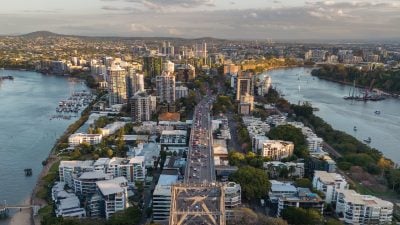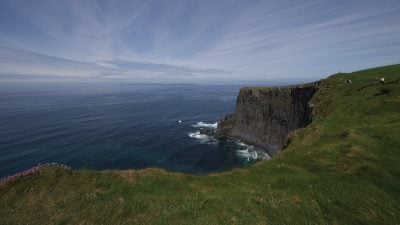Home / UK & Europe / An Ideal Central European Vaca…

An Ideal Central European Vacation: Prague and Bratislava
It’s common to think of Europe being cleanly divided between Eastern Europe and Western Europe, but such a simple breakdown doesn’t get at the heart of the complexities this continent has to offer. Furthermore, it glosses over the region of Central Europe, where tensions between East and West and geographic differences express themselves in fascinating ways. Only by heading on a Central European vacation to Prague and Bratislava do you begin to see the wonders of this distinct region.
As the capitals of Czechia (or the Czech Republic) and Slovakia, Prague and Bratislava offer a lot for travellers to enjoy. They’re home to rich histories that have been at the crux of major world events. They’re also full of gorgeous architecture that is as accomplished and astounding as the architecture you’ll find in more popular western cities. If you’ve never been to Central Europe, a journey through Prague and Bratislava makes for an ideal European vacation. These capitals of the former Czechoslovakia are convenient to travel to, relatively affordable, and offer you a taste of what makes Central Europe so wonderful.
Prague: The City of a Thousand Spires
For a long time, Prague had a reputation as a discount Paris, where you could see gorgeous architectural and historical sights for a fraction of the price of a trip to the French capital. While Prague is undoubtedly cheaper than Paris (few European cities aren’t), thinking of it only in comparison to the Western European showstoppers does the city a disservice. Prague is incredible in its own right and is undoubtedly one of Europe’s best cities.
As the capital of Czechia and the centre of Bohemia, Prague has been at the heart of a lot of European history. Holy Roman Emperors called the city home during the Middle Ages and the Austro-Hungarian Empire saw the city become one of the key strongholds for the Habsburg Dynasty. In the late 20th century, the city became central to the dismantling of communism in Eastern Europe, hosting the Velvet Revolution that saw the mostly-peaceful transition to democracy and open trade with the West.
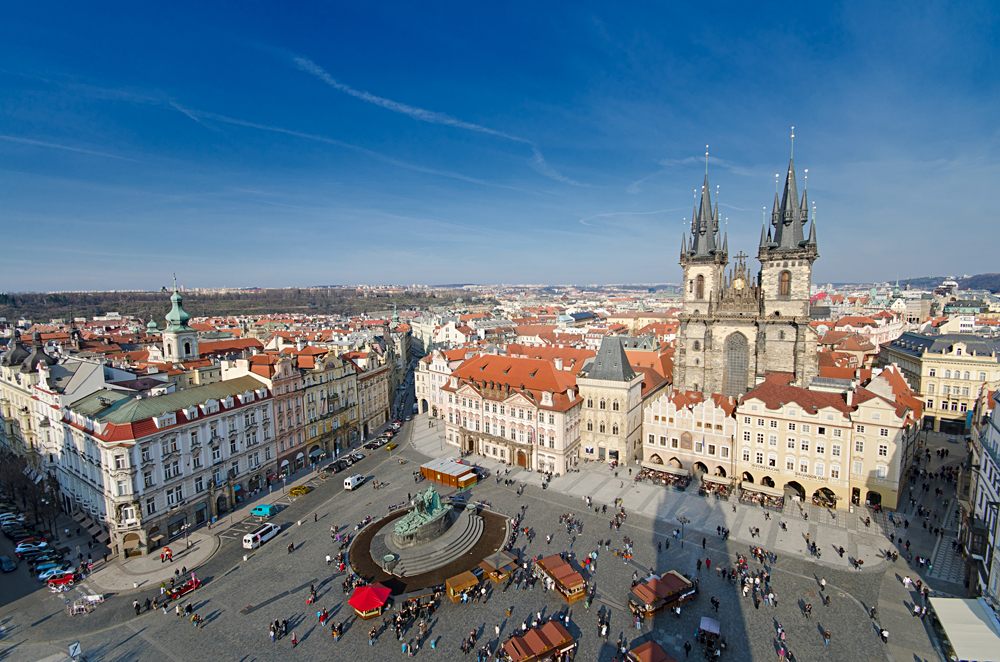
Today, a visit to Prague on a European vacation offers a chance to explore history, savour architecture, and simply indulge in the cosmopolitan pleasures of a world city. The population of just over one million gives the city the leverage of being a major cosmopolitan centre, but you’d never think the city is crowded; it’s only in the Old Town and on Castle Hill that you’ll be jostling for space, mostly due to fellow tourists. If you want to delve into the city’s history, head to Wenceslas Square, the 14th-Century square where hundreds of thousands of Czech citizens protested during the Velvet Revolution. You can visit the Museum of Communism just off the square if you want to learn about the city’s Soviet history, or simply stroll its picturesque avenues before heading to the Old Town and Prague Castle to learn about the city’s medieval past.
As you stroll through the city and cross a few of the famous bridges, you’ll notice the towering architecture that defines the town. Prague has even been known as the “City of a Thousand Spires,” in reference to its striking Gothic architecture. On a first visit to Prague, you’ll want to stroll down Wenceslas Square before heading to the Old Town Square where you’ll find the Astronomical Clock Tower that dazzles with its animated figurines that come to life every hour on the hour. Afterwards, cross over one of the bridges and head for Prague Castle, which overlooks the city and is the largest castle complex in the world. The castle also boasts St. Vitus Cathedral, a stunning example of Gothic architecture that took over six centuries to complete. Be sure to take your time snapping photos of Prague’s famous red-rooftops and medieval spires from the hilltop as you won’t get a better view of the city than on the east side of Castle Hill.
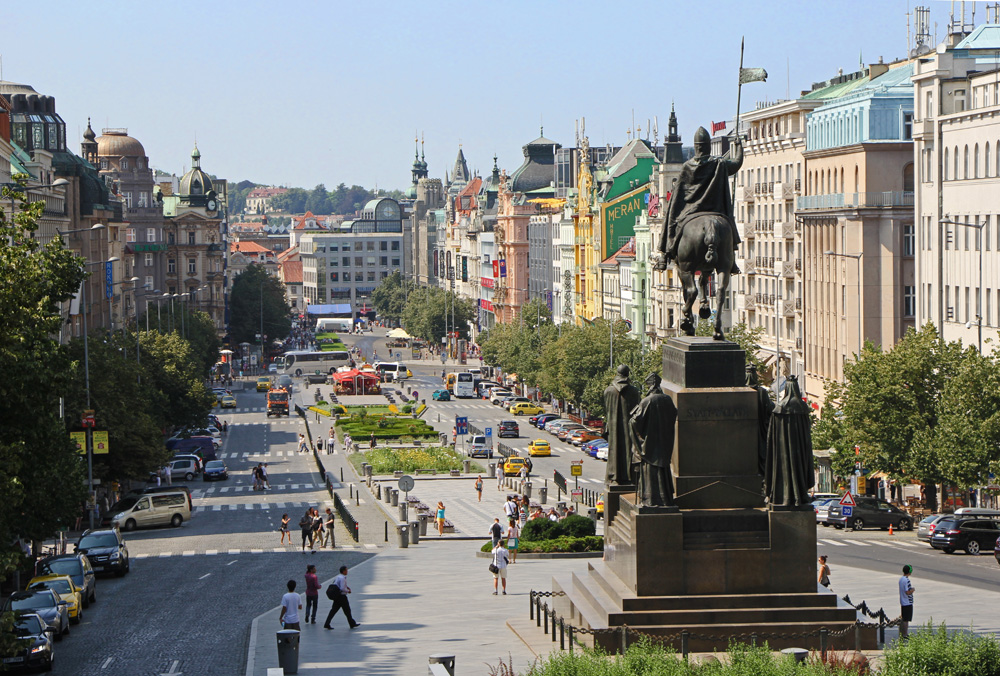
During a Prague vacation, you’ll also want to be sure to see Charles Bridge, which is the most famous of the city’s many bridges crossing the Vltava River. The bridge’s heavy stonework is iconic, as is the Old Town Bridge Tower that lies on the eastern side and offers sweeping views of the city if you climb it. For a worthwhile site off the main tourist circuit, head to the Old Jewish Cemetery to the north of the Old Town, which offers you a chance to learn about the city’s rich Jewish heritage and see many examples of Jewish design.

Also be sure to enjoy the food and drink while in Prague. Czechia is famous for its beer and there’s no more famous Czech beer than Pilsner Urquell, the world’s original pilsner beer. You’ll find Pilsner Urquell on tap at most every pub in the city. Prague is also a good place to try some potato dumplings with gravy, some sautéed sour cabbage, and even beef goulash, which differs from Hungarian goulash by being thicker and less spicy. Czech food isn’t exactly healthy, but it is delicious, and when you’re travelling, that’s what counts.
Related Article:
Visit the City of Prague on a Czech Republic Vacation
The Little Big City of Bratislava
Prague may get its handful of visitors on a European vacation, but people too often overlook Bratislava when travelling to Central and Eastern Europe. Before I visited the city, I was warned about its lack of attractions and mundane vibe, with people admonishing me to spend as little time there as possible, even if I had to connect through it on route to a different (and presumably more glamorous) location. Of course, once I got to Bratislava, the city immediately proved its critics wrong.
It’s true that Bratislava is smaller than most other European capitals – it has a population of just over 400,000 – and it’s also true that the communists destroyed much of its historical architecture, but there’s still plenty to see and do here. Furthermore, its laidback vibe and charming market atmosphere make it a comfortable city to explore on your own. If you ever grow tired of the tourist bustle of larger European cities, you’ll greet Bratislava like a breath of fresh air.
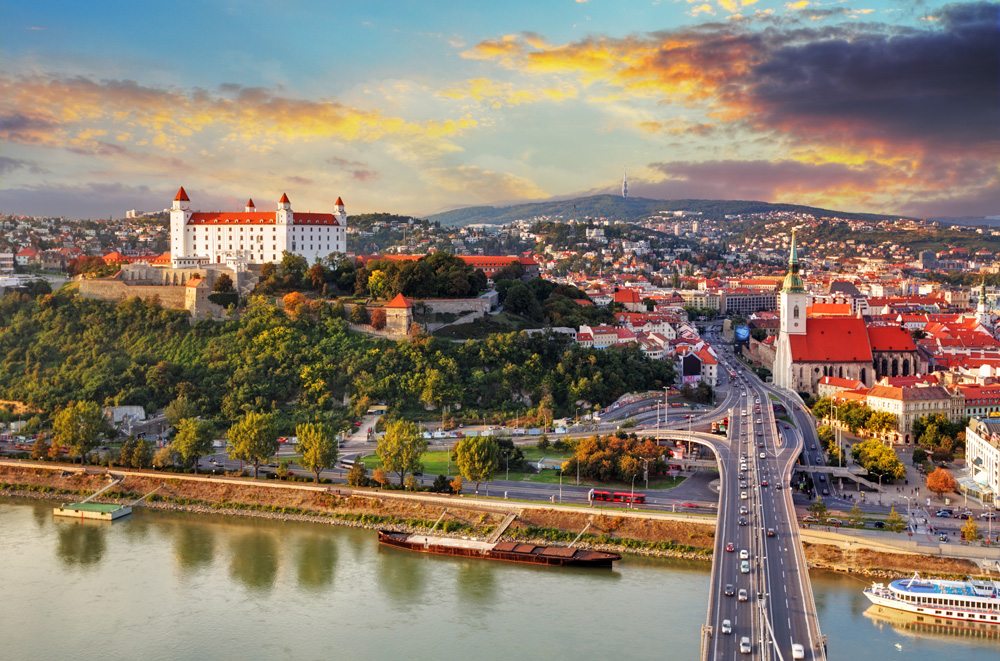
Historically, Bratislava was a key city within the Hungarian Empire, known under the name of Pressburg or Pozsony. When the Ottoman Empire conquered the Kingdom of Hungary, the city became the Hungarian capital. It reaches its greatest heights during the reign of Queen Maria Theresa in the 18th century, but faded under the rule of her son, Joseph II, who moved many of the royal offices to Buda and Vienna. The city gained the name Bratislava in 1919 and became known as the second city of Czechoslovakia under Communist rule in the mid-20th century. After the Velvet Divorce in 1993, it finally became the capital of the autonomous state of Slovakia and has transitioned into the economically-prosperous city that it is today.
Bratislava is a city of two distinct halves. On the north side of the Danube River, you’ll find the Old Town, which contains the remnants of medieval churches and halls. On the south side of the river, you’ll be overwhelmed by concrete high-rises and Soviet statues of Communist Bratislava. You’ll be wise to spend most of your time on the north side of the Danube as the medieval remnants of Pressburg are far more pleasant than the Brutalist buildings across the river, but don’t completely ignore the city’s communist side. Experiencing the extreme juxtaposition between the two is one of the chief pleasures of a Slovakian vacation to Bratislava.
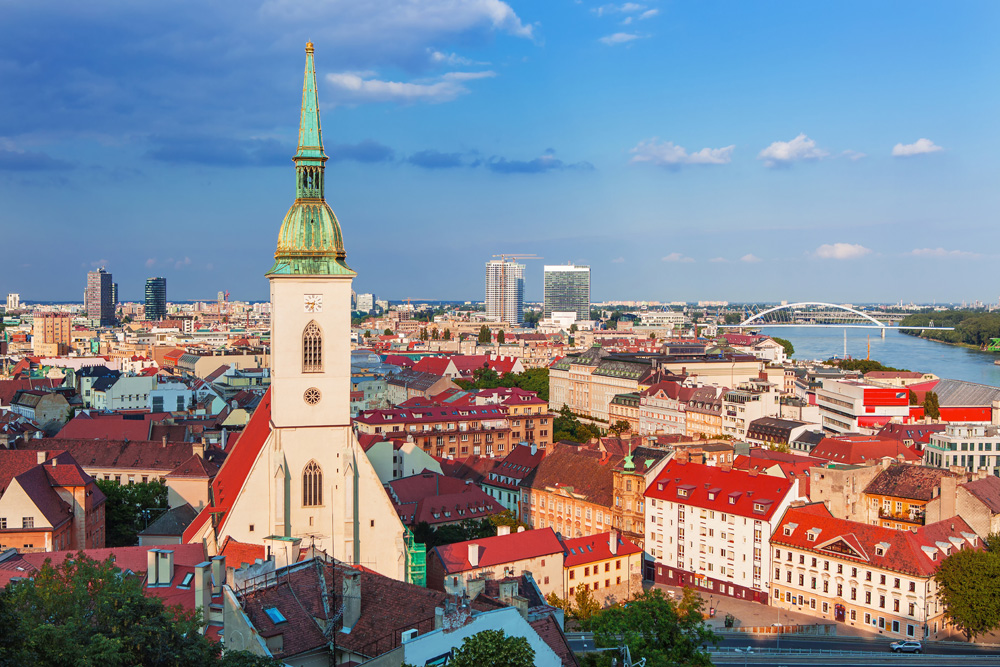
The Old Town is the chief attraction of the city’s medieval core. Head to the Main Square to find the Old Town Hall, which contains the Bratislava City Museum, as well as picturesque Michael’s Gate and the University Library Building. A few blocks southwest of the Main Square, you’ll find St. Martin’s Cathedral, a 13th-century Gothic and Romanesque cathedral that hosted the coronations of Hungarian monarchs through the early modern period. Part of the appeal of the church, which looks deceivingly modest upon first glance, is the extensive network of crypts beneath it. Only two of the crypts are open to visitors, but they’re worth visiting as they offer insight into the cathedral’s importance to the monarchy and the Eastern European church. As well, it’s simply cool to descend beneath the church and walk through the narrow corridors.
Outside of the Main Square, the most popular landmark in Bratislava is Bratislava Castle, which overlooks the city from a hill on the north side of the Danube. Bratislava Castle was home to the Hungarian Monarchy when the city was the Hungarian capital and although it was burnt down in the early 19th century, it was reconstructed in the 1950s and remains a picturesque example of Baroque architecture. There’s a museum inside the castle that’s worth visiting, although simply walking throughout the courtyard and admiring views of the city from the castle walls is an enjoyable experience.
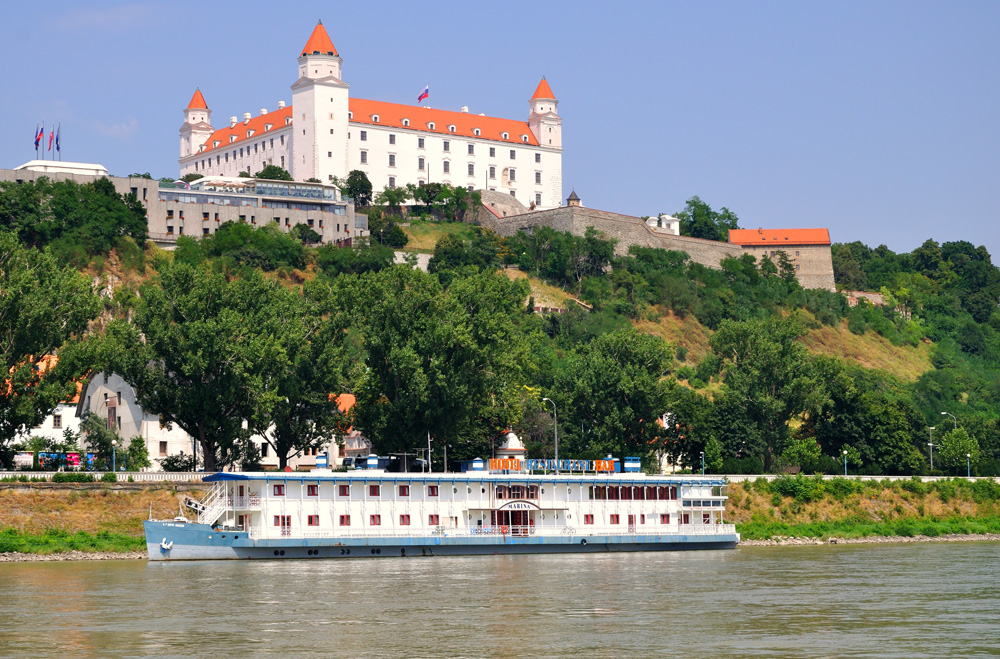
I mentioned that you shouldn’t avoid the communist part of the city when visiting Bratislava on a European vacation, and there’s no more memorable and bizarre relic of the Communist era than Most SNP, the bridge connecting the Old Town with the communist barracks south of the river. Although officially named Most SNP (and New Bridge before that), it is best known as the UFO Bridge (pronounced ew-fo) due to the undeniably extra-terrestrial design of the observation tower on the bridge’s southern side. Head across the bridge and stop to climb the UFO Observation Deck before continuing to the south side of the Danube to see Soviet statues, visit malls, and snap some shots of the concrete apartment blocks that overwhelm everything in view.
Aside from the medieval and communist highlights within the city, it’s essential to see Devin Castle, located to the west of the city along the Danube. Although the actual castle was demolished by Napoleon’s troops in the early 19th century, the castle walls and foundation remain. This hill has been home to fortifications for thousands of years, with everyone from Celts to Romans utilizing its strategic position. Beyond the actual ruins, the castle is remarkable for its location at the meeting point of the Danube and Morava Rivers and right on the border of Austria. The views here are spectacular and the atmospheric ruins only add to the enjoyment of an afternoon here.
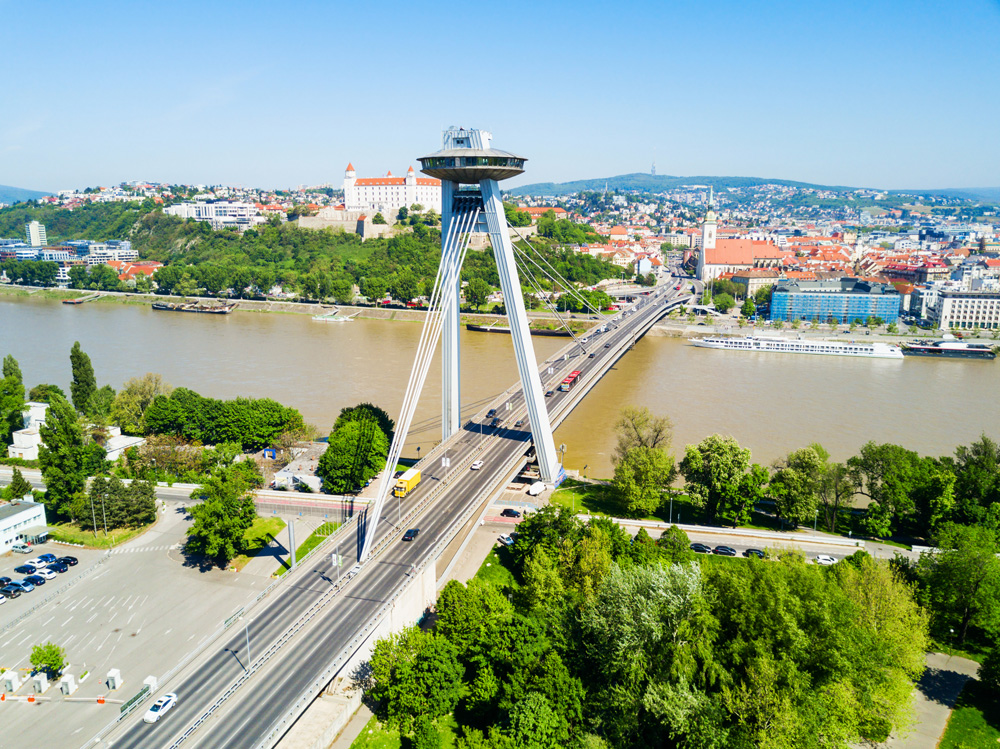
Both Prague and Bratislava are easy cities to visit on a European vacation. You can fly into Prague, spend three or four days exploring its historical treasures (and taking an afternoon to visit nearby Kutna Hora, home to the macabre Sedlec Ossuary) before taking a train ride or short flight to Bratislava to visit the Slovakian capital for a couple days before connecting onward to Vienna or Budapest. Don’t ignore the pleasures of Central Europe on a trip to Europe, even if the larger centres of Western Europe are your main destinations.
A visit to Prague and Bratislava brings with it the chance to explore fascinating European history, admire gorgeous Gothic architecture, and enjoy the atmosphere of easygoing cities. They’re ideal destinations on a Central European vacation.
Get more travel inspiration by email.
Subscribe
0 Comments

Get the latest travel trends & hear about the best deals on vacations around the world.
If you’re a Globetrotter, these are the newsletters for you!

